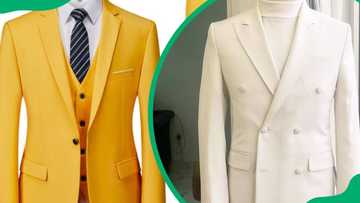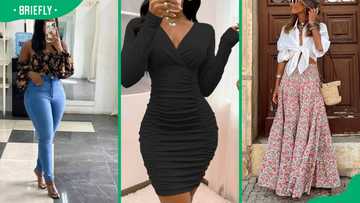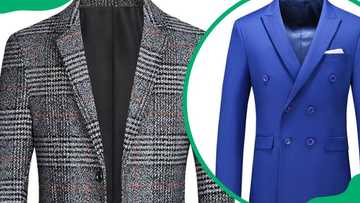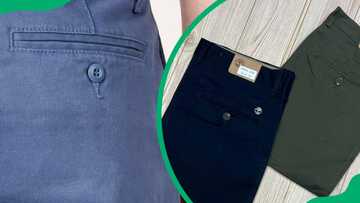Button-up vs button-down shirts: Key differences and when to wear
Making a fashion statement is relatively easy when you have button-up and button-down shirts. But then, do you need clarification about button-up vs button-down shirts? Stay calm; it is a common mix-up. The two words are often used interchangeably. While all button-down shirts are also button-up shirts, not all are button-downs. This article guide clears up the mystery.
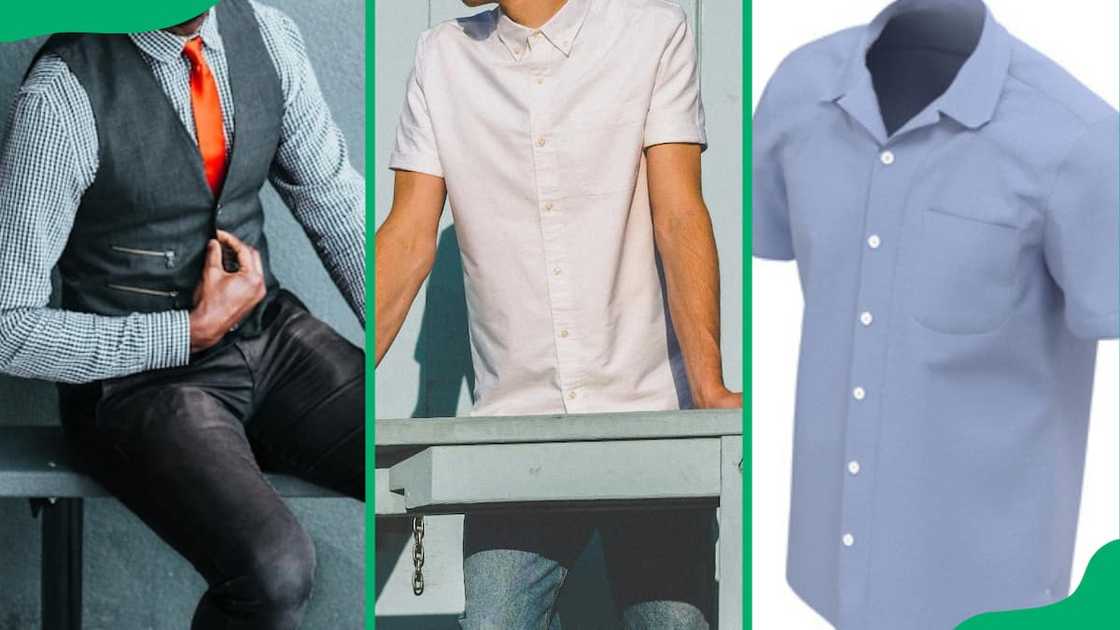
Source: UGC
TABLE OF CONTENTS
Button-up and button-down dresses can complement suits, blazers, jeans, and khaki trousers. Although they seem alike, they have few differences, and it depends on you to rock them as you please. Your choice of shirt can be based on the colour, fabric, collar type, and occasion.
Button-up vs button-down shirts
There is a subtle difference between the two types of shirts. As such, discussions on when to wear button-up vs button-down demand care. Button-up shirts suit formal events, business settings, and dressy occasions (date night/dinner), especially with ties or dress pants.
Button-down shirts offer versatility for casual wear, fitting various relaxed events like brunch, cookouts, errands, and casual business meetings.
What is a button-up called?
A button-up is also called a button-front shirt, dress shirt, or a button-up shirt. It has a full-length button placket that buttons or fastens up the front from the collar to the hem. However, it does not have buttons at the collar points. It is the most worn men's dress in various styles and colours globally.
This shirt originated from the 19th century with what they call detachable collars and cuffs. They have a top button and are a must-seen dress in men's wardrobe. They are more fitted and made with sophisticated fabrics.
What is a button-down shirt?
A button-down shirt is a dress shirt with a collar secured by buttons. It has regular front buttons but a button-down collar, which entails a collar with two more buttons fastened to the dress.
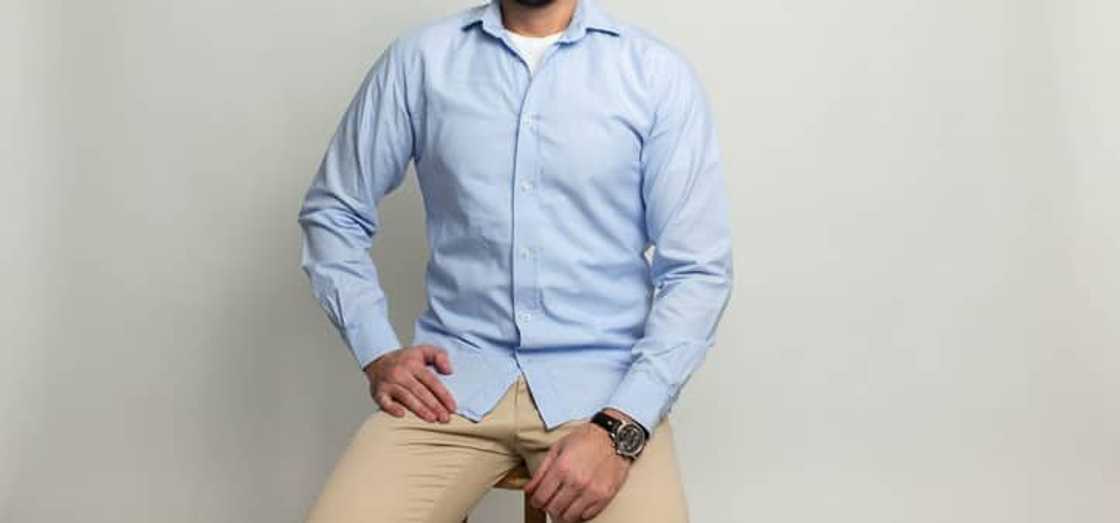
Source: Getty Images
There are two types of button-down shirts: the classic button-down collar (buttons on the collar are visible) and the hidden button collar (buttons on the collar points are hidden).
Why is it called a button-down?
The term "button-down" originated from the practice of fastening the collar of a shirt down with small buttons, ensuring a tidy appearance. This innovation originated in 1869 in England. It emerged from the inconvenience experienced by the British polo players, specifically the Ivy League Polo players whose collar flaps obstructed their vision during matches on horses.
John E. Brooks eventually popularised it in America. He witnessed one of the matches in England and decided to integrate it into fashion. He initially named it Polo collar dresses, and it was favoured by athletes for its practicality. Today, the button-down dress has transitioned into mainstream fashion due to its functional yet stylish design.
Which button do you button up?
"Button-up" refers to starting from the bottom button and working up. Following this process makes you always look exceptional.
How to wear a button-up shirt
Are you thinking of how to style your button-up on different occasions? Here are a few tips for you:
Formal attire
- Pair your shirt with a suit and tie, ensuring the dress complements the suit's colour and pattern.
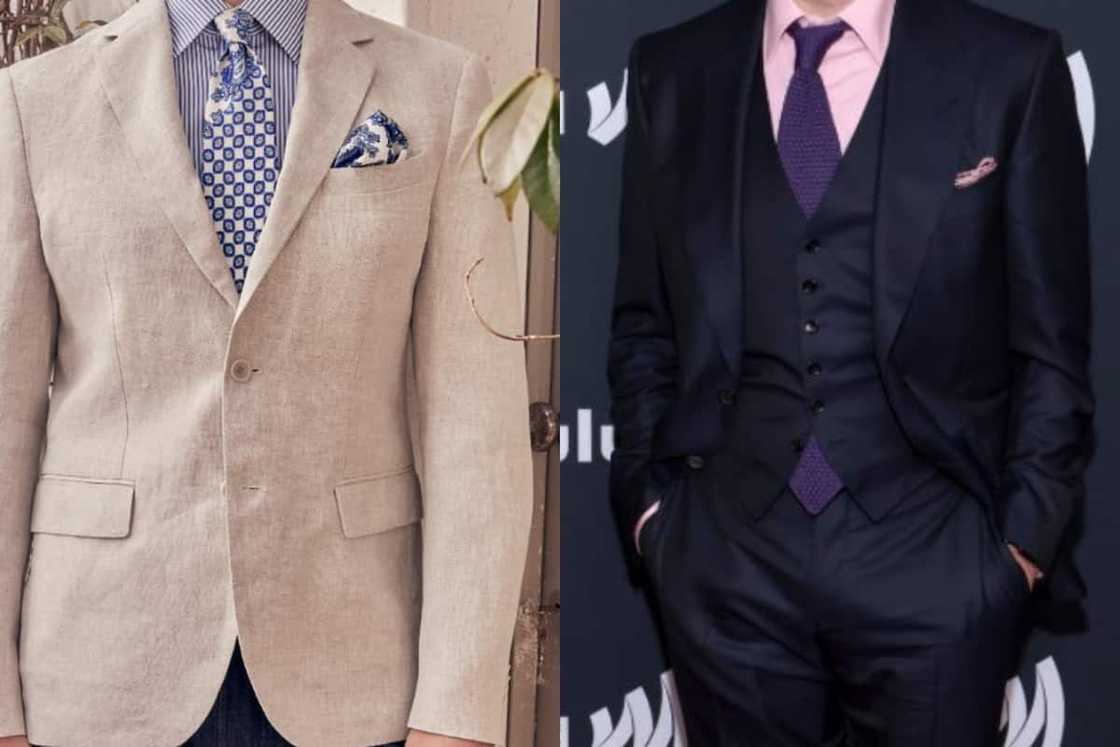
Source: UGC
- Casual outing: Dress it down with chinos or jeans, leaving the top button undone and rolling up sleeves for a relaxed vibe.
- Layering essential: You can wear it under a sweater or jacket. Ensure it is a well-fitted shirt that is light enough.
- Classic elegance: Button up all the way and tuck the dress into trousers or a skirt, adding a belt for a refined finish.
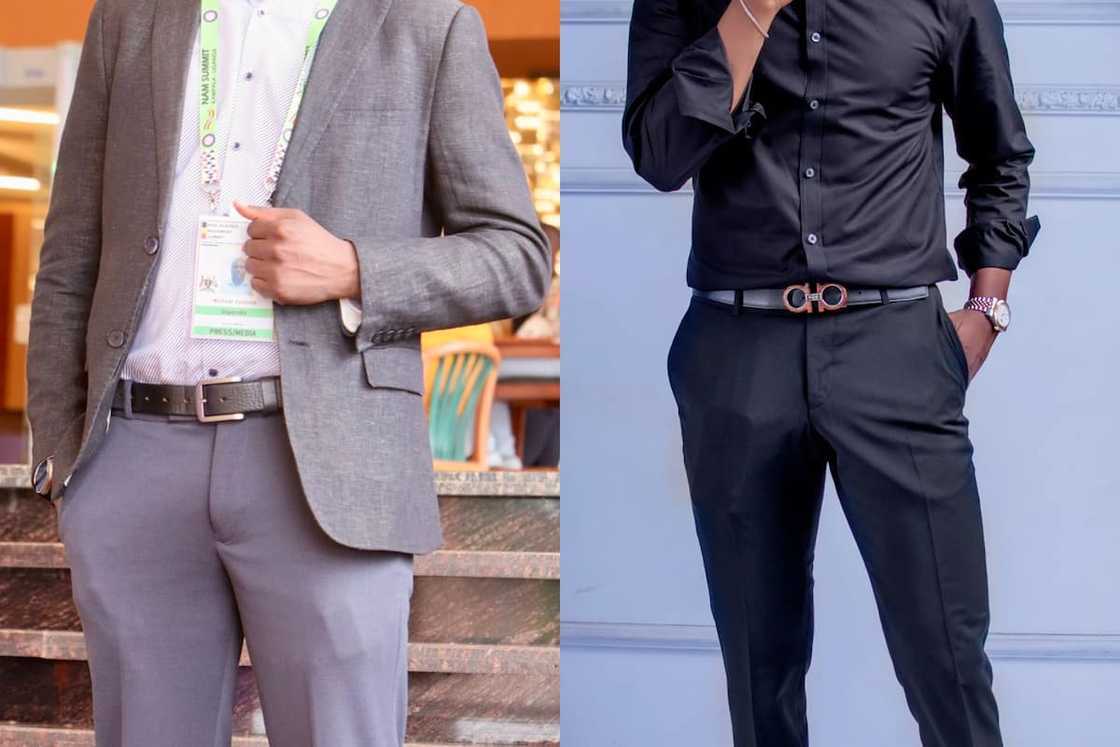
Source: UGC
- Relaxed casual: Leave a few buttons undone, and wear untucked with jeans or shorts for a laid-back feel.
- Sleeve styling: Roll sleeves to elbows for a relaxed look.
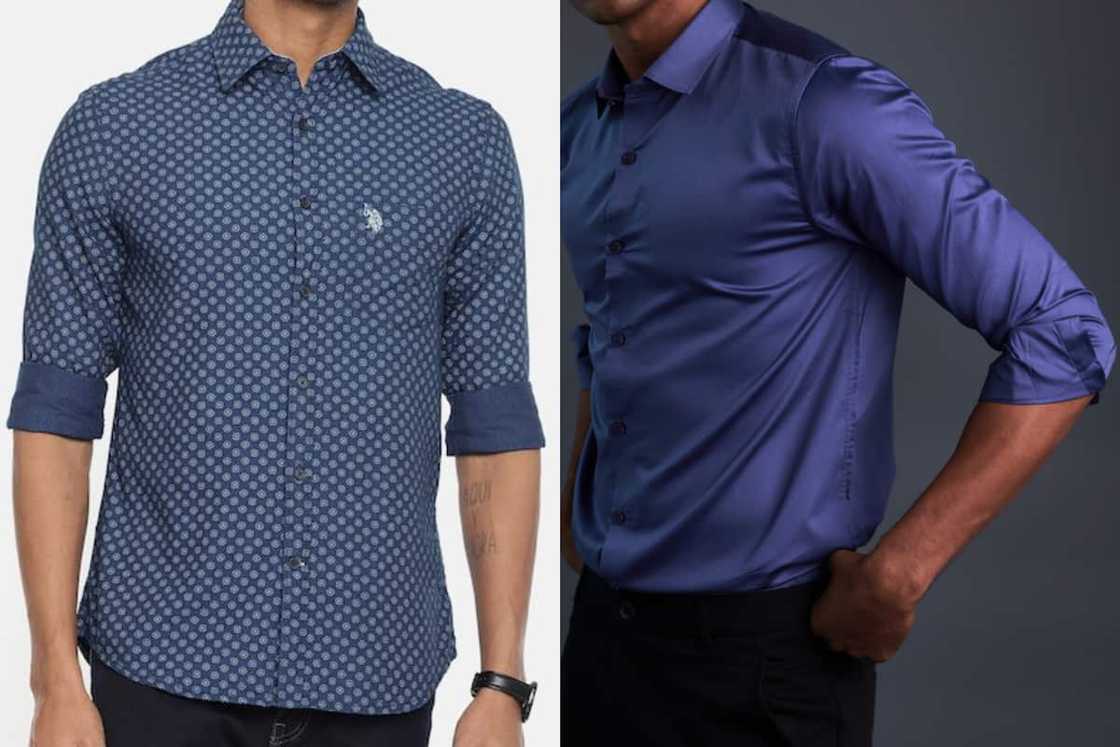
Source: UGC
- Personal touch: Accessorise with a statement necklace or scarf for added personality.
How should I wear a button-down shirt?
It depends on your personal choice and style. Here are some style inspiration:
- Classic casual: Pair with khaki pants, chinos, or jeans for a more relaxed look. Roll up the sleeves for added flair.
- Layered look: Use as a base layer beneath a sweater or jacket for added warmth and style.
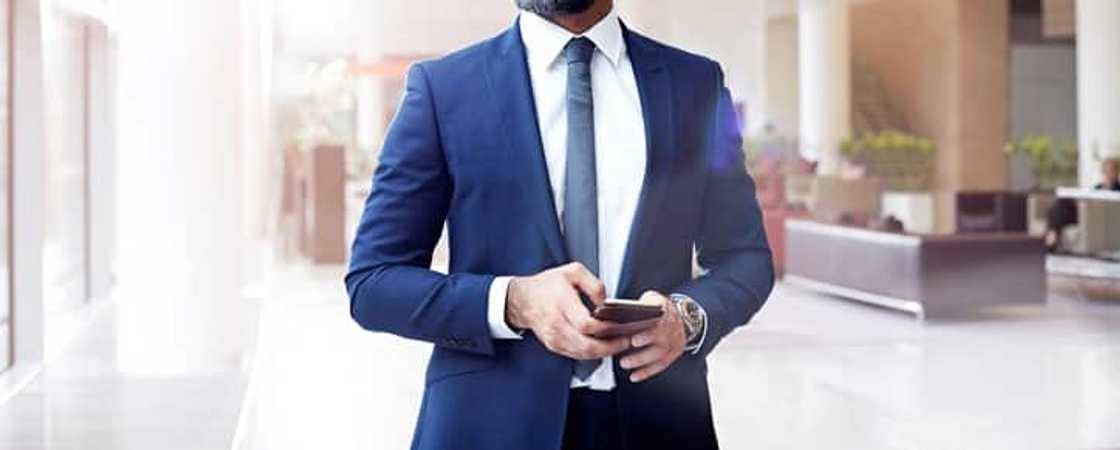
Source: Getty Images
- Dressier/ business look: Opt for a structured fabric and team with tailored trousers and a blazer for a more formal appearance. You can embrace the trend of buttoning the dress up for a modern look, ideal for cooler seasons. Layer with a jacket for added style.
- Relaxed yet polished look: Choose a relaxed-fit button-down in casual fabrics like chambray or flannel for a laid-back vibe. Pair it with jeans and boots.
- Casual look: You can unbutton the collar and top buttons for a relaxed vibe, perfect for weekends or casual outings.

Source: Getty Images
- Rugged look: Wear a flannel button-down shirt over a t-shirt or under a sweater for a rugged, outdoorsy look. You can also add a pair of boots or a beanie for extra warmth. You can also button down the collar sans tie or unbutton the collar buttons and ditch the tie.
What is the difference between a button-up and a button-down?
The significant difference between a button-up and a button-down is the collar. The former does not have two buttons on the collar points, while the latter has two to help fasten the collar to the dress. Below are some other minor differences:
- Collar styles: Button-ups can have any collar design, whether spread collar or pointed collar. But seeing a button-down with that can be challenging because it is more casual.
- Pockets: Button-down shirts mostly have pockets rather than button-ups.
- Fabric: Button-ups are made with fine linen and fabrics. The other is made with more casual and flannel fabrics.
- Cuff: Their cuff styles differ as buttons up might have French cuffs.
Is a button-down collar more formal?
It is more casual. A button-up is more formal and dressier and can be worn with suits and ties.
Button-up vs button-down shirts are part of modern-day fashion. Despite their collar differences, one can be swapped for the other depending on the individual's choice.
READ ALSO: A guide to the different types of ties and when to wear them
As published on Briefly, ties are versatile accessories that elevate any look, from casual to formal. However, with so many styles to choose from, it can be overwhelming.
In this guide, you will learn about the different types of ties and receive tips on when to wear them, ensuring you can always confidently make a stylish statement.
Source: Briefly News

